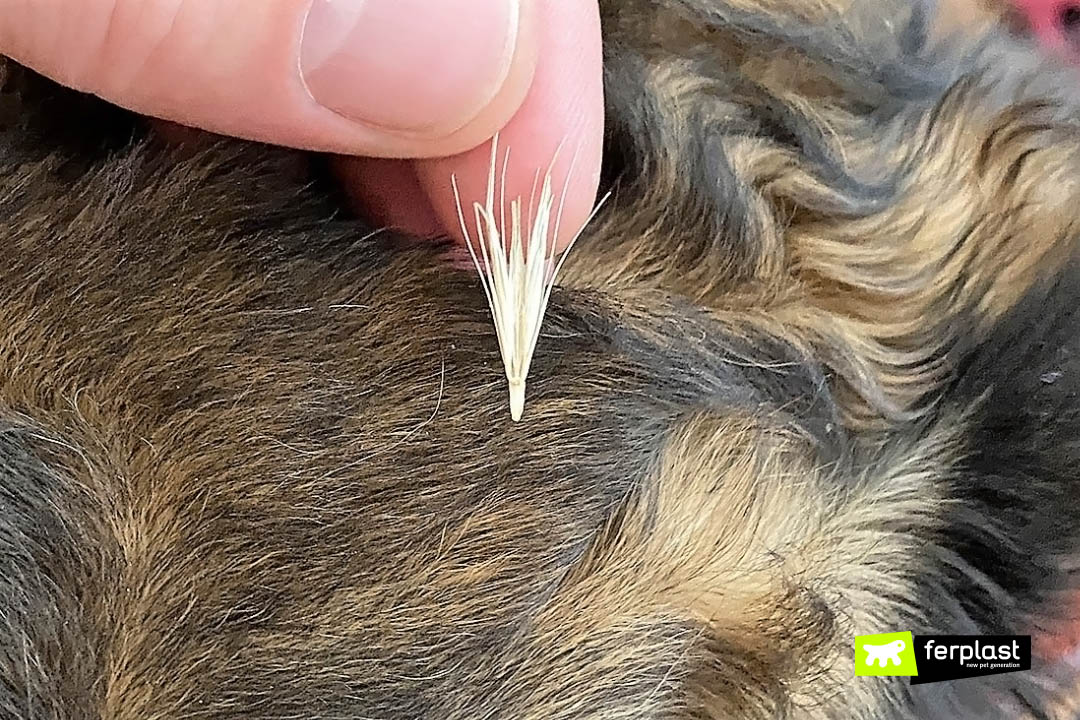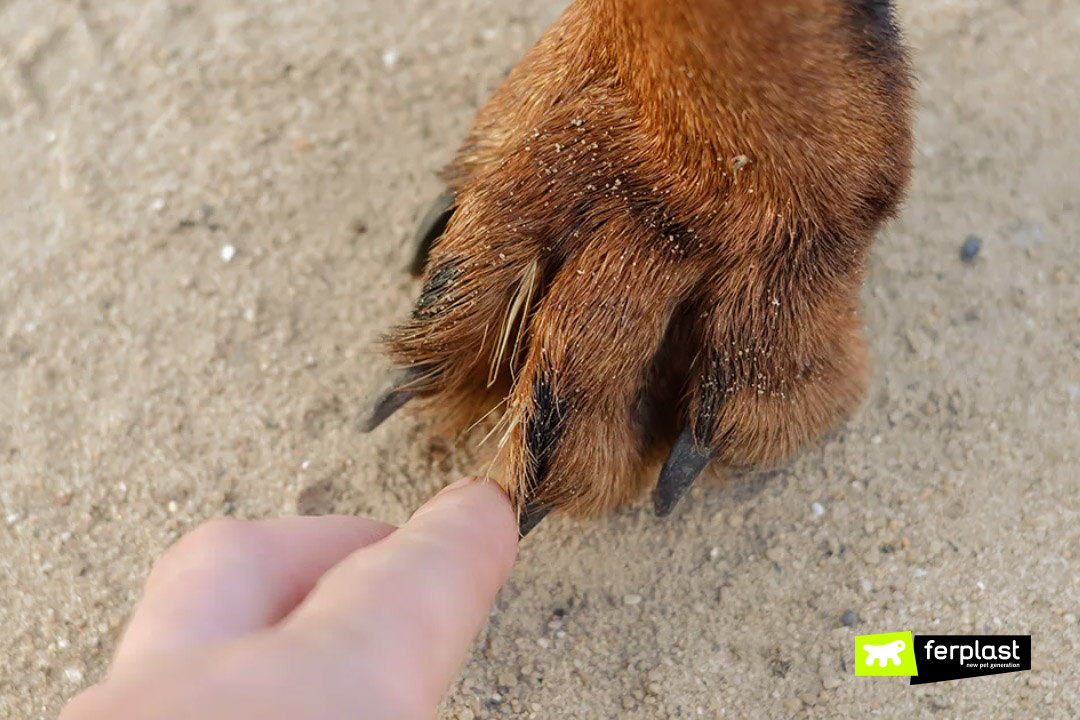Perhaps not everyone is aware that during the warmer months, among the many dangers that a dog may encounter, one of the most feared is the foxtail. It represents a significant threat to your four-legged friend, which is why it’s crucial to remain alert.
But what exactly is a foxtail and what are the symptoms and most effective remedies to protect your dog? Let’s find out together!
Foxtails in dogs: How to identify them
Foxtails are nothing more than the spike of certain types of grasses which, once dried, detach from the stem and fall in large quantities to the ground. They are not only found in the countryside or hilly areas, but are also widespread in cities, often on the sides of roads.
So why are foxtails dangerous for dogs? Their lance shape and rough, spiny coating make these spikes attach very easily to your four-legged friend’s fur and embed into the skin, causing severe infections and leading to redness, pus discharge, pain, and swelling.
Where can foxtails embed in dogs?
There are certain parts of a dog’s body where it is more common for a foxtail to embed, usually because these are natural openings where it can easily penetrate. These areas need to be checked very carefully, especially during the summer period.
The nose: Dogs are natural explorers, which is why it can happen that during inhalation, a foxtail enters the nostrils. This will cause violent sneezing and often also bleeding.
The ears: Foxtails can also sneak into your dog’s ears. Although the extent of the damage often isn’t severe, it’s a very bothersome foreign body. The dog will tend to shake and keep its head tilted.
Legs and under the skin: If the foxtail attaches to the dog’s fur, it can quickly penetrate the skin. Besides being very annoying, the foxtail under the skin does not stay still, but tends to move, making extraction even more difficult.
The mouth: if the dog inhales the foxtail with its mouth, the risks can be very high. The dog will have a violent cough with bleeding and it is necessary to act quickly to prevent serious complications.
How to remove a foxtail from a dog
If you notice that your dog has a foxtail, there are some cases in which you can intervene yourself, taking great care. This happens when the spike has stuck into the skin but has not yet penetrated. You can proceed with extraction using clean tweezers. Maximum delicacy and a firm hand are required, to avoid breaking the foxtail.
If, on the other hand, the foxtail has penetrated the skin, it is necessary to promptly seek professional veterinary help and under no circumstances should you attempt to extract the foxtail from the dog yourself.
How to avoid foxtails in dogs
Preventing foxtails in dogs is important but very challenging. The danger of these spikes is just around the corner and it’s not always easy to avoid them. It is certainly recommended to avoid venturing into tall grass with your dog, especially during the summer months.
Also, once the walk is over, carefully check and inspect your pet and frequently brush their fur using a wide-toothed comb like the GRO 5757 Premium if your dog has medium or long hair, or a brush like the GRO 5759 Premium if your dog has short hair.
In the summer, do not underestimate the dangers of foxtails in dogs and keep your attention high to prevent very serious complications in your pet!




